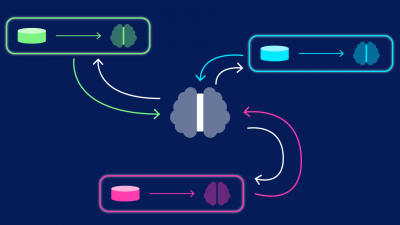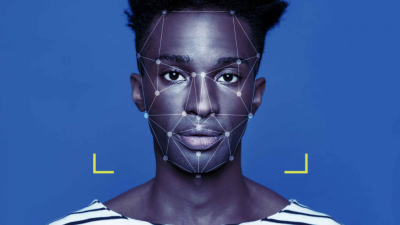Augmented reality has transformed dramatically over the past decade.
Early AR interfaces were static and inflexible.
Users had to adapt to the technology rather than the reverse.
Today’s AR experiences are becoming increasingly responsive and intuitive.
This evolution stems largely from advances in machine learning, particularly reinforcement learning.
These adaptive interfaces represent a fundamental shift in how we interact with digital overlays.
Understanding Reinforcement Learning in AR
Reinforcement learning operates on a surprisingly simple principle.
Systems learn by receiving rewards for beneficial actions.
In AR interfaces, these rewards might be linked to user engagement or task completion.
The system experiments with different interface presentations.
It observes which choices yield positive user responses.
Over time, it optimizes for approaches that generate the best outcomes.
This creates an interface that evolves based on real-world usage patterns.
Personalization Beyond Presets
Traditional personalization relied on predefined user categories.
Reinforcement learning enables truly individualized experiences.
The system continuously adapts to each user’s unique preferences.
It notices which interface elements you use frequently.
It observes which information layouts help you complete tasks more efficiently.
Elements that cause confusion or delays get modified or repositioned.
This dynamic adaptation happens subtly, often without users explicitly noticing.
Learning from Natural Interactions
Reinforcement learning models thrive on observational data.
They watch how users naturally interact with AR elements.
Do you frequently resize certain windows? They’ll appear larger initially.
Do you regularly search for specific tools? They’ll become more prominent.
The system learns your work patterns and environmental preferences.
This learning happens passively, without interrupting your workflow.
As explained by experts at AR Marketing Tips, this creates interfaces that feel intuitive rather than engineered.
Contextual Awareness and Adaptation
Modern AR systems understand more than just user preferences.
They recognize environmental contexts and situational needs.
The interface adapts differently in bright outdoor settings versus dim indoor rooms.
It provides more detailed guidance in unfamiliar environments.
It simplifies information during high-stress or high-movement situations.
These contextual shifts happen automatically without manual mode switching.
The result feels remarkably natural, like having a perceptive assistant.
Balancing Exploration and Stability
Effective reinforcement learning systems must balance opposing needs.
They need to explore new interface options to discover improvements.
Yet they must maintain enough stability for users to develop familiarity.
This balance requires sophisticated algorithms and careful implementation.
Too much change frustrates users who expect consistency.
Too little exploration prevents discovery of better interface designs.
The most successful systems make small, incremental adjustments that accumulate over time.
Overcoming Technical Challenges
Implementing reinforcement learning in AR presents unique difficulties.
Processing must happen quickly to maintain responsive interfaces.
Limited device resources constrain algorithm complexity.
Data collection must respect user privacy while gathering sufficient information.
Battery life considerations impact how frequently the system can update.
Developers are finding innovative ways to address these constraints.
Edge computing and optimized algorithms are making adaptive interfaces more practical.
Real-World Applications in Action
Reinforcement learning is already enhancing AR experiences across industries.
Industrial maintenance applications adjust guidance based on technician expertise.
Medical training simulations adapt difficulty to match learning progression.
Retail AR experiences personalize product presentations based on browsing patterns.
Navigation interfaces emphasize different landmarks depending on user attention patterns.
Gaming environments modify challenges based on player skill development.
These adaptive experiences significantly outperform their static counterparts.
Measuring Success Through Engagement
How do we know if adaptive interfaces are actually improving?
Reduced time to complete tasks provides one clear metric.
Decreased error rates indicate improved usability.
User satisfaction scores tend to rise with well-implemented adaptation.
Longer voluntary usage sessions suggest enhanced engagement.
Reduced need for help or documentation indicates intuitive design.
These metrics guide further refinement of the learning algorithms.
Ethical Considerations in Adaptive Interfaces
Adaptive systems raise important ethical questions.
User agency may be undermined by interfaces that change autonomously.
Data collection for personalization must respect privacy boundaries.
Systems might inadvertently reinforce existing biases in user behavior.
Transparency about adaptation becomes crucial for maintaining trust.
Users should understand how and why their interfaces evolve.
Opt-out options remain essential for those who prefer stability.
The Role of Human Designers
Reinforcement learning doesn’t replace human designers.
It changes their role in fundamental ways.
Designers now establish the parameters within which adaptation occurs.
They define reward structures that guide learning algorithms.
They set boundaries for how much interfaces can change.
They identify which elements should remain consistent across contexts.
This partnership between human creativity and machine learning creates superior outcomes.
Implementation Strategies for Developers
Implementing adaptive AR interfaces requires thoughtful approaches.
Start with limited adaptation in non-critical interface elements.
Establish clear metrics for what constitutes improved user experience.
Create fallback options when adaptation produces undesired results.
Implement gradual changes rather than dramatic interface shifts.
Provide subtle indicators when the interface has adapted.
Test with diverse user groups to ensure adaptations work across demographics.
The Future of Adaptive AR Experiences
As reinforcement learning algorithms improve, interfaces will become increasingly intuitive.
We’ll see systems that anticipate needs before users express them.
Interfaces will adapt not just to preferences but to emotional states.
Collaboration between multiple users will be facilitated by shared adaptive spaces.
The boundary between commanding and conversing with interfaces will blur.
Physical and digital interaction models will merge more seamlessly.
The ultimate goal is technology that feels like a natural extension of human capability.
Conclusion
Reinforcement learning represents a transformative approach to AR interface design.
By creating systems that learn continuously from actual usage, we move beyond rigid, one-size-fits-all experiences.
The most successful implementations balance adaptation with stability, exploration with consistency.
While technical challenges remain, the trajectory is clear: tomorrow’s AR experiences will recognize and respond to our individual needs in increasingly sophisticated ways.
The static interfaces of yesterday are giving way to dynamic, personalized experiences that truly augment our capabilities rather than simply overlaying information on our world.





